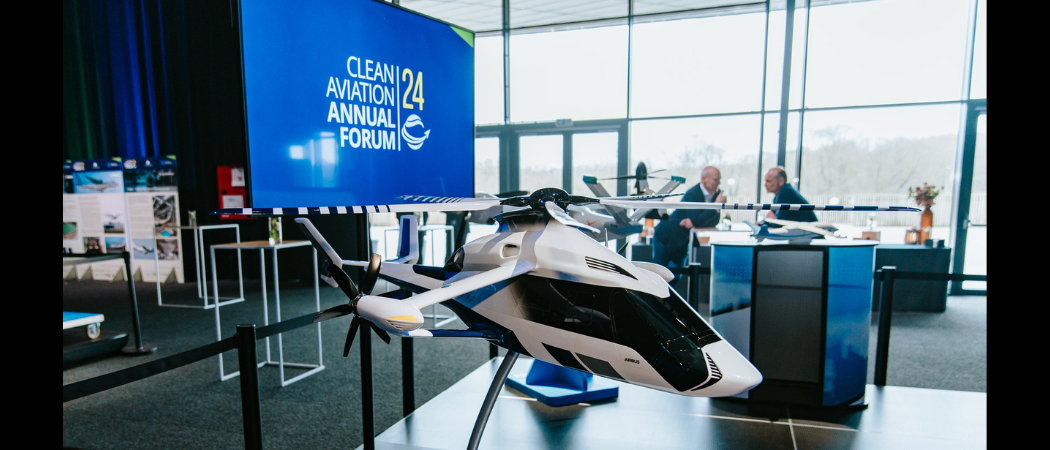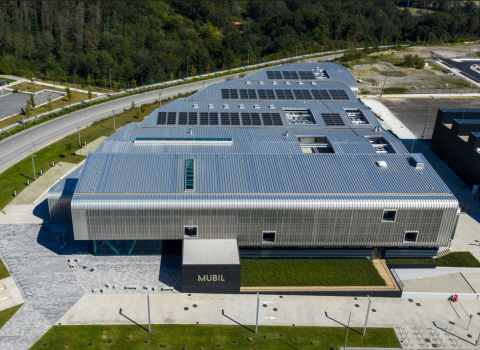A more joined-up approach across EU and national funding schemes is needed if the sector is to be climate neutral by 2050

Photo: Clean Aviation / Flickr
The Clean Aviation joint undertaking will need to unlock additional funding as it prepares to enter a new phase to bring its research closer to market, executive director Axel Krein said on Tuesday.
The EU’s industrial partnership for sustainable aviation launched its first calls in 2022, with the focus on identifying concepts and developing technologies. Now it is preparing for the flight demonstration phase, and is due to launch the next large call in early 2025.
“Those big demonstrations are quite euro intensive,” Krein told the Clean Aviation Annual Forum in Brussels. “We are facing some budget challenges to support all those promising new aircraft technology concepts.”
The partnership, which replaced the Clean Sky 2 joint undertaking, is dedicated to developing hybrid electric regional aircraft, ultra-efficient short and short-medium range planes, and hydrogen-powered aircraft.
The objective is to increase the energy efficiency by 30%, leading to an overall reduction of CO2 emissions of 80 to 100%, including the use of sustainable aviation fuels or hydrogen, for new regional and short-medium range aircraft. To stay on track, it will need to find ways to optimise available funding, Krein said.
The demonstration projects will need to be completed by 2028 or 2029 in order for new, sustainable aircraft to enter into service by 2035. The ambition is then to replace 75% of the European fleet by 2050.
“In those 15 years, we need to be ready, so the industrial context needs to be there; the product needs to be mature enough to allow for such a ramp-up,” said Krein.
Clean Aviation’s budget is made up of €1.7 billion from the European Commission, and €2.4 billion from industry members. But more is needed, and Krein called upon the decisionmakers in the room to maintain support for the joint undertaking.
“Extensive public and private funding in research and innovation is crucial to ensure groundbreaking techs are being developed,” he said.
The funding gap emerged after 20 new members joined the partnership last year, including many SMEs, a Clean Aviation spokeswoman told Science|Business.
“These newcomers are going to come up with disruptive ideas, which will require more research, and that was not anticipated three years ago when the budget was fixed,” she said.
The team is currently working on the strategic research and innovation agenda for its second phase, in which it will quantify how much extra funding it needs, and which it hopes to submit to the governing board in June.
The partnership is also hoping to receive additional funding following the UK’s association to Horizon Europe. UK participation in Clean Aviation’s predecessors represented around 15% of total research efforts, and there is an expectation the budget will increase accordingly, the spokeswoman said.
Synergies needed
On Monday, Clean Aviation held a workshop on synergies between EU, national and regional research programmes, and this could be one way to make money go further. The joint undertaking is particularly targeting regions with a strong aviation industry, where it could have an impact on skills and employment.
“At the EU level, we have joint undertakings, we have collaborative research, we have the innovation fund, and they need to be connected much better than what we do today. The same needs to happen at member state and regional level,” Krein said.
France is one of those countries investing heavily in the sector. In June 2023, president Emmanuel Macron announced €300 million of public funding per year over four years for sustainable aviation research and development.
France’s research priorities are closely aligned with those of Clean Aviation, said Yannick Assouad, president of the French Association for Research in Civil Engineering who is executive vice president of Thales. “This is where I feel we should make an effort to be coordinated, so the budget adds on to go faster, rather than being redundant and working on the same thing,” she said.
France has long understood the importance of co-investment between the state and the aviation industry, and the latest pledge provides welcome long-term certainty, Assouad said. “It takes years, sometimes decades, to put new technology onboard a commercial aeroplane. There’s no private investor that would invest for so long with so much money.”
Long-term commitments are required to secure European industrial leadership, said Eric Dalbiès, chief technology officer at French multinational Safran. “We in Europe are currently sowing the seeds for the technology of tomorrow,” he said. “Having sown the seeds, and after that, having disruption in the support, would probably mean others get the benefits of the crops.”
It comes at a time when research funding is under threat from tightening budgets and the need to ramp up defence capabilities. The Horizon Europe budget is being cut by €2.1 billion, and France recently announced a €900 million cut to its own research and higher education budget for 2024.
Assouad says there is “clearly a competition between the different budgets”, but she believes EU member states recognise the importance of the aviation sector, which contributes around 4.4% of Europe’s GDP.
The sentiment was echoed by Maroš Šefčovič, Commission vice president for the European Green Deal, who said aviation is “clearly a strategic sector for the EU”, and “a sector where Europe is leading”.
Incentivise adoption
More funding alone will not bring about the targeted emissions reductions, warned Jo Dardenne, aviation director at environmental lobby group Transport & Environment. She wants to see a regulatory framework to mandate or incentivise the use of sustainable technologies.
“Where is our regulation to deploy hydrogen aircraft? Do you think airlines will buy whatever comes out of Airbus’s manufacturing lines? Go ask them,” she said. “I doubt they will say yes without knowing how long the plane can fly, how many passengers it can fly, the cost of hydrogen, the infrastructure readiness.”
Dardenne also warned that efficiency gains risk being undermined if the number of flights continues to rise. “The aviation sector needs to address its addiction to growth if it wants to continue to have a licence to fly,” she said.
Renewable energy infrastructure is another key obstacle the industry must overcome if it is to reap the full benefits of new technologies.
“We will need to almost double clean electricity production in Europe if we want to produce the e-fuel or hydrogen we need in the future,” said Assouad.





 A unique international forum for public research organisations and companies to connect their external engagement with strategic interests around their R&D system.
A unique international forum for public research organisations and companies to connect their external engagement with strategic interests around their R&D system.